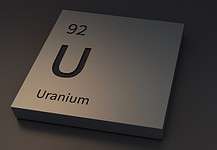The government co-funding initiative has been going since 2009. Image: Asia Iron.
By Cameron Drummond
42 PROJECTS across WA will share up to $4.75 million under State Government’s Exploration Incentives Scheme (EIS) co-funding drilling initiative.
The $130 million initiative, initially supported by Royalties for Regions, is being funded from April 2009 to June 2017.
The program refunds up to 50 per cent of direct drilling costs with caps of $150,000 for a multi-hole project, $200,000 for a single deep hole, and $30,000 for a prospector application.
Refunds are made after completion of drilling and the submission of reports, which are released publically by the Department of Mines and Petroleum after a six-month confidentiality period.
State mines and petroleum minister Sean L’Estrange said the drilling program, which was heading into its ninth year, provided companies with added incentive to drill in underexplored regions.
“Encouraging exploration is the key to the continuity of Western Australia’s vital resources industry, which will underpin the State’s economy for decades to come,” Mr L’Estrange said.
“This very successful program has already resulted in a number of major discoveries. Among the success stories is the Nova discovery east of Northam, supported by EIS geophysics data and co-funding in 2011-12, with production having commenced in November this year.”
Co-funding recipients for this round include gold prospects from Fortescue Metals Group, Antipa Minerals and Chalice Gold Mines.
Other EIS successful discoveries include the Camelwood nickel deposit 500km north of Kalgoorlie, Yeneena copper deposit in the Paterson Province, Millenium zinc in the East Pilbara, and the Dusk Til Dawn gold discoveries north-east of Wiluna.
An economic impact study released early in 2015 showed that every $1 million spent by the EIS generated $10.3 million of exploration activity and a longer term benefit to WA, in terms of higher Gross State Product, of $23.7 million.
The Association of Mining and Exploration Companies (AMEC) chief executive Simon Bennison said the program was highly regarded by industry.
“The EIS programme is an example of a government program that translates into more jobs on the ground,” Mr Bennison said.
“Sourcing capital is challenging in the current market conditions where investors are risk adverse and not investing in exploration.
“Continuation of the program is essential to enable these companies to continue exploring and making new mineral discoveries such as the Nova nickel at Fraser Ranger and Gruyere, east of Laverton.”








































